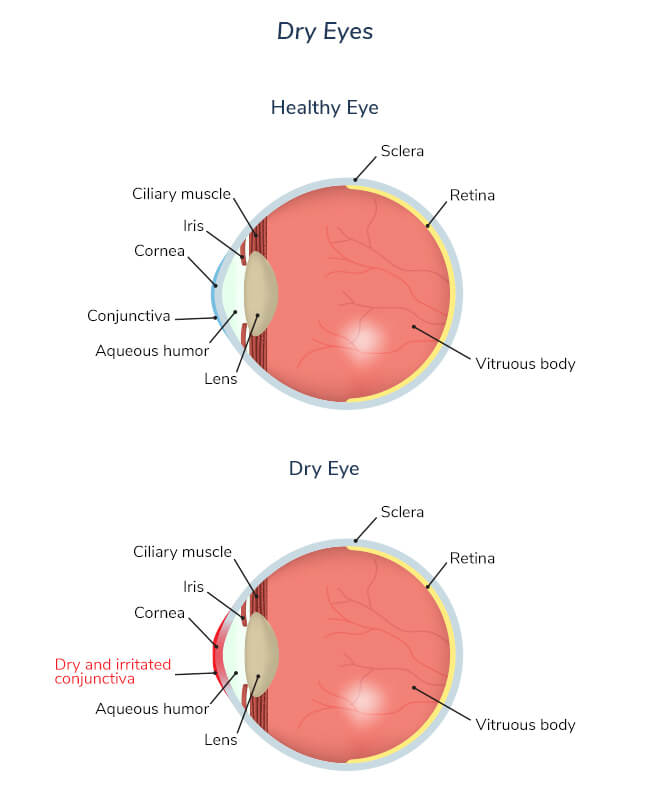Dry Eye Syndrome
Schedule an Appointment
Call 713-668-6828
Symptoms for Dry Eye Syndrome
Dry eye-related discomfort is one of the most frequent complaints heard by eye doctors. The symptoms of dry eyes are varied, and the list below is by no means all-inclusive, however, patients that suffer from dry eyes usually experience a number of the following symptoms:
- Dryness
- Redness
- Scratchiness
- Blurred Vision
- Foreign body sensation
- burning sensation
- sandy/gritty sensation
Dry eye syndrome often referred to as keratitis sicca or keratoconjunctivitis sicca, is caused by insufficient and/or poor-quality tears. There are three main components of human tears. Most human tears are produced by the lacrimal gland. The oily component of tears is produced by the meibomian glands and the third component, the goblet cells, keeps all the components mixed up. When one of the parts of this mixture becomes unbalanced, dry eye syndrome can occur. There are numerous reasons as to why these glands may not be doing their part.
Insufficient tear production and/or poor tear quality are the most common causes of dry eye syndrome. Inflammation of the lacrimal gland is the most common cause of insufficient tear volume. Meibomian gland dysfunction, inflammation of the glands at the eyelid margin, contributes to poor tear quality. Medications can also cause ocular dryness. Hormonal changes also contribute to insufficient and poor-quality tears.


Treatment Options for Dry Eye Syndrome
Artificial Tears
Artificial tears containing active ingredients such as carboxymethylcellulose, hydroxypropyl methylcellulose, glycerin, castor oil, polyethylene glycol, or polyvinyl alcohol are used in mild cases of dry eyes. Not all artificial tear brands work the same or work in all patients. More severe cases require additional treatment. If you find yourself using your artificial tears three or more times a day you should use a preservative-free tear. Most patients find that artificial tears do help, however, the effect is only temporary, lasting only 10-15 minutes. Most of these patients will experience significant relief with punctal occlusion.
Punctal Occlusion
The puncta is a small opening found on the edge of the upper and lower eyelids next to the nose. Tears drain out of the eye through the puncta into the nose, therefore your nose runs when you cry. If you aren’t producing enough tears, then you don’t want the tears that you are producing to be drained away. Punctal occlusion is painless and performed in the office, taking only a couple of minutes.

